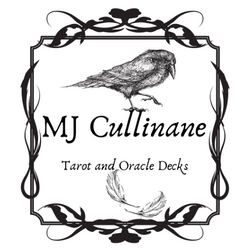
Unraveling the Mysteries: Tarot, Oracle Decks, and the Enigmatic Lenormand
Share
Navigating the world of divination can seem like wandering through an enchanted forest – there's wonder at every turn, but the path can occasionally get confusing. Here are a few of the common questions about tarot and oracle decks I receive via email.
What are oracle decks for and how are they different from the Tarot?
Oracle decks are insightful tools that provide guidance, wisdom, and clarity. Unlike the tarot, with its structured system of 78 cards, oracle decks don't follow a fixed format. The themes are as varied as the imagination allows – they can encompass everything from plants and animals to abstract concepts. They often serve as narrative prompts or intuitive messages, beckoning you to introspect and reflect. Take the Liminal Forest Oracle as an example – each card invites you to step back and see your situation differently.
Is Lenormand an oracle deck?
Here's where things get a tad intricate. The Lenormand system, named after the famed French fortune teller Marie Anne Lenormand, is unique. While one might feel an initial urge to group it with Oracle decks, it stands distinct.
How is Lenormand different from an Oracle Deck or a Tarot deck?
Three key differences set Lenormand apart:
- Structure & Count: A Lenormand deck always comprises 36 cards. In contrast, the tarot has 78, while oracle decks have no set number.
- Reading Style: Lenormand cards offer a direct, almost conversational style of divination. They focus on combining cards to weave narratives rather than the profound symbolic interpretations often associated with tarot or oracle decks.
- Visuals: Lenormand card designs are more direct and less symbolic than their tarot and oracle counterparts.
If you're curious about exploring this system, my whimsical Tales for Tomorrow Lenormand offers a contemporary take on this age-old art.
What are the different types of tarot decks?
Tarot is a vast universe in itself. Despite the foundational 78-card structure, the thematic range is immense:
- Rider-Waite-Smith: Often the first choice for newcomers, it's celebrated for its detailed and instructional imagery.
- Thoth Tarot: A deep dive into esoteric realms, crafted by Aleister Crowley.
- Marseilles: With its roots in medieval Europe, it remains a popular choice for purists. M
- Modern & Thematic Decks: It seems like recently the world has seen an explosion of creativity in tarot design. Decks like my Raven's Dream Tarot are often based on the messaging of the Rider-Waite-Smith bringing fresh perspectives and themes, making the art the attraction for many readers.
No matter which divination method you choose, whether it's tarot, oracle, or Lenormand, there is a wealth of knowledge and insight to be gained. Trust your intuition and allow these mystical tools to guide you on your journey. The wisdom they offer can be incredibly illuminating and bring clarity to even the most complex situations. Embrace the journey ahead with an open heart and let these tools be your guiding light.
